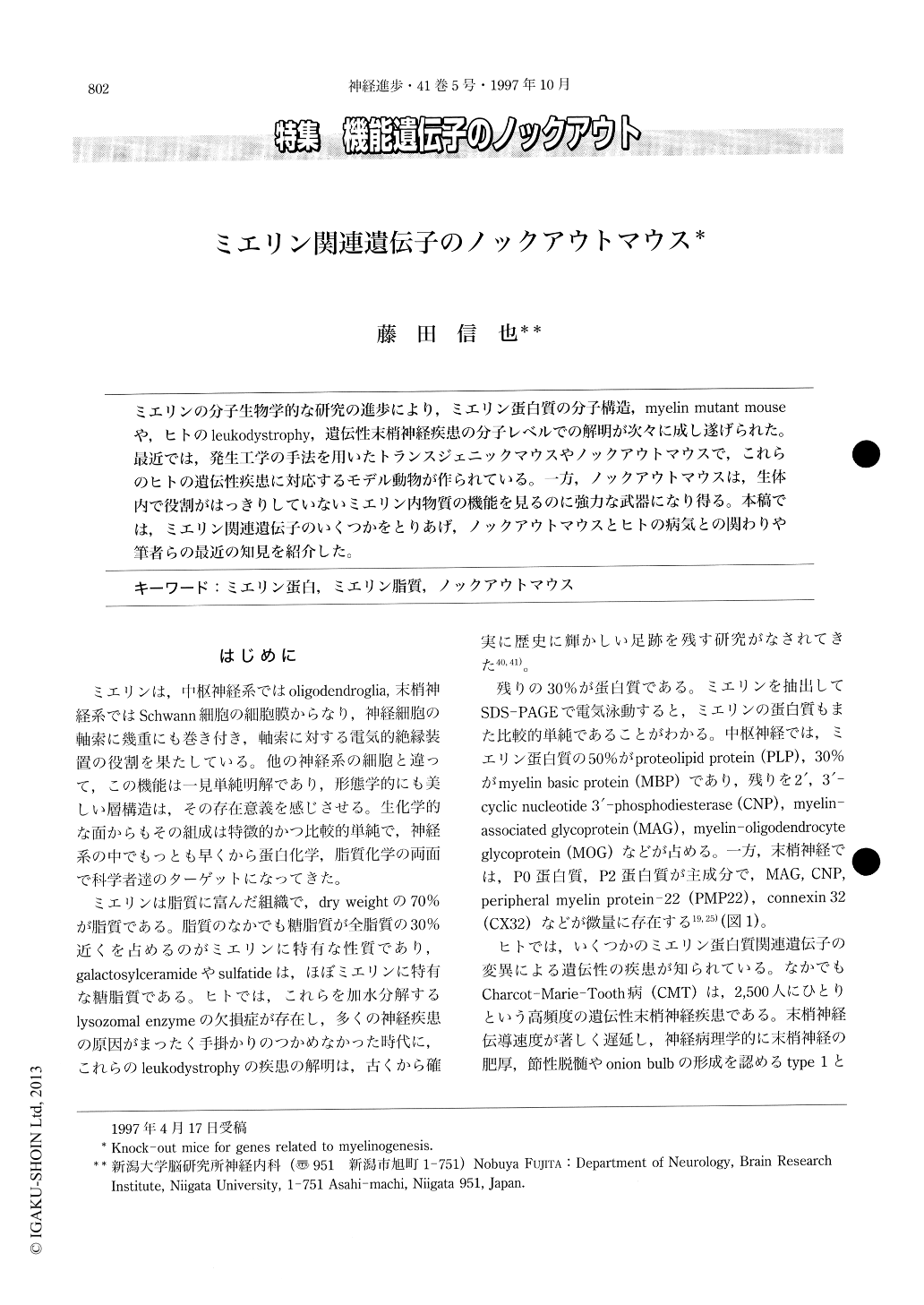Japanese
English
- 有料閲覧
- Abstract 文献概要
- 1ページ目 Look Inside
ミエリンの分子生物学的な研究の進歩により,ミエリン蛋白質の分子構造,myelin mutant mouseや,ヒトのleukodystrophy,遺伝性末梢神経疾患の分子レベルでの解明が次々に成し遂げられた。最近では,発生工学の手法を用いたトランスジェニックマウスやノックアウトマウスで,これらのヒトの遺伝性疾患に対応するモデル動物が作られている。一方,ノックアウトマウスは,生体内で役割がはっきりしていないミエリン内物質の機能を見るのに強力な武器になり得る。本稿では,ミエリン関連遺伝子のいくつかをとりあげ,ノックアウトマウスとヒトの病気との関わりや筆者らの最近の知見を紹介した。
Myelin, a membrane characteristic of the nervous system, wraps around the nerve fibers and acts as an insulator to increase the velocity of nerve impulses. Although most biological membranes have a higher ratio of proteins to lipids, both CNS and PNS myelin is characterized by a high proportion of lipid (70%) and a low proportion of protein (30%). Two sphingolipids, galactocerebroside (GalC) and sulfatide, are the most typical of myelin. Krabbe disease and metachromatic leukodystrophy (MLD) involve abnormal degradation of these sphingolipids, respectively.

Copyright © 1997, Igaku-Shoin Ltd. All rights reserved.


